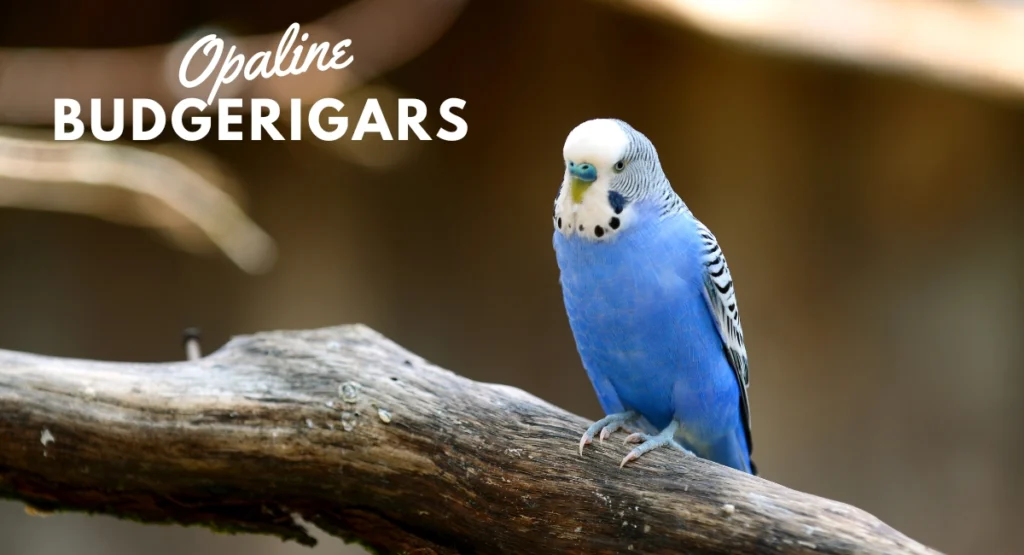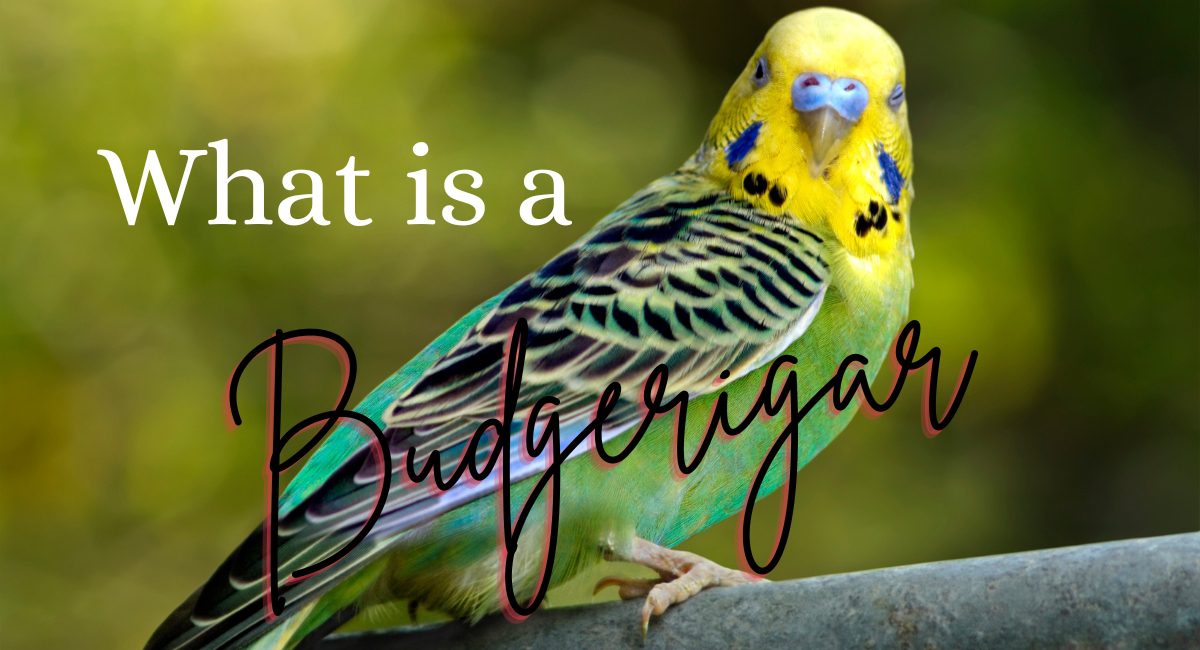Are you interested to know about budgerigars (Budgies) welcome to All Pet Loverz. Here we are going to share you detailed information about What is a Budgerigars. Stay tuned with us.
Introduction to Budgerigars
Budgerigars, commonly referred to as “Budgies” or “Parakeets,” are small, colorful parrots native to Australia. Renowned for their vibrant plumage and cheerful personalities, these diminutive birds have captured the hearts of pet enthusiasts worldwide.
Short Intro About Budgies (What is a Budgerigars)
| Lifespan | 6-8 Years |
| Weight | 30-40 gms |
| Scientific Name | Melopsittacus undulatus |
| Domain | Eukaryota |
| Family | Psittaculidae |
| Kingdom | Animalia |

A Brief History and Origin of Budgies
Are you interesting to know Where do budgerigars live?, Here is the answer – Australia. Lets know more, Originating from the arid regions of Australia, Budgerigars have a rich history dating back centuries. Indigenous Australians first encountered these birds in the wild, where they observed their unique behaviors and melodic calls. European naturalists later encountered Budgerigars during explorations of the continent in the late 18th century.
Budgerigars swiftly gained popularity as captivating aviary birds due to their striking appearance and engaging behaviors. Their ability to mimic sounds and learn tricks also contributed to their allure as beloved companions.
Physical Characteristics of Budgerigars
- Size and Shape: Budgies are small parrots, measuring approximately 7 inches (18 cm) in length from beak to tail. They have a compact, streamlined body with a short, square-shaped tail.
- Plumage: Their feathers come in various colors, including shades of blue, green, yellow, white, and combinations thereof. Budgies often have intricate patterns and markings on their feathers, with some exhibiting unique patterns such as spots or stripes.
- Beak: They have a small, curved beak that is perfect for cracking open seeds, their primary food source.
- Head: Budgies have a relatively large head in proportion to their body size. Their heads are crowned with a distinctive series of tiny feathers forming a sort of cap or crest.
- Eyes: Their eyes are round and typically dark in color, set on the sides of their heads, providing them with good peripheral vision.
- Legs and Feet: Budgies have strong, sturdy legs and feet designed for perching. They have four toes on each foot, two facing forward and two facing backward, allowing them a secure grip on perches.
- Wings: When folded, their wings rest neatly against their body. Budgies have the ability to fly, and their wings allow them to move swiftly and agilely.
- Sexual Dimorphism: In terms of physical appearance, it’s generally difficult to differentiate between male and female budgies based on visual characteristics alone. However, some experienced breeders may identify subtle differences in the color of the cere (the area above the beak) to determine gender, but this is not always reliable.
Budgerigar Types and Varieties
Budgerigars boast a diverse array of types and color mutations, captivating enthusiasts with their charming variations and unique characteristics.
Standard Budgerigars vs. Exhibition Types

Popular Color Mutations and Varieties
Lutino Budgerigars:

Known for their yellow plumage and striking red eyes, lutino Budgerigars lack the melanin pigment, resulting in their distinctive appearance.
Albino Budgerigars:

Albino Budgerigars exhibit a lack of melanin pigment, showcasing a pure white plumage and red eyes, differentiating them from lutinos.
Opaline Budgerigars:

Opaline Budgerigars feature unique feather patterns, characterized by a softer body color with a contrasting wing pattern.
Spangle Budgerigars:

Identified by their clear body color with dark markings, spangle Budgerigars boast a captivating and intricate wing pattern.
Budgerigar Care and Habitat
Budgerigars, cherished for their vibrant personalities, require proper care and a suitable living environment to thrive. You should be know these facts about budgies to keep them as Pets.
Housing Requirements and Cage Setup
Creating a suitable housing and environment is crucial for the health and happiness of budgerigars (budgies). Here’s a guide to providing the ideal living space for these birds:
- Cage Size: Select a spacious cage to accommodate your budgie’s active nature. A minimum recommended size for a single budgie is around 18 x 18 x 18 inches (45 x 45 x 45 cm). Bigger is usually better, allowing more room for flying and movement.
- Bar Spacing: The bars of the cage should be close enough together (about ½ inch or 1.27 cm apart) to prevent escape or injury, yet wide enough to allow climbing and perching.
- Perches: Offer multiple perches of varying thicknesses and materials (natural wood, rope, or plastic) to promote foot health and exercise. Avoid sandpaper-covered perches as they can cause foot problems.
- Toys and Enrichment: Budgies are intelligent and curious birds. Provide a variety of toys such as bells, swings, ladders, and puzzles to keep them mentally stimulated and entertained.
- Location of the Cage: Place the cage in a well-lit area away from drafts and direct sunlight. Ensure it’s not in the path of strong air conditioning or heating vents.
- Temperature: Budgies are comfortable at temperatures ranging between 65-85°F (18-29°C). Avoid extreme temperature fluctuations, as they can be detrimental to their health.
- Bedding and Cleaning: Use paper-based bedding or cage liners at the bottom of the cage for easy cleaning. Change the bedding regularly to maintain cleanliness and hygiene.
- Hideouts/Nesting Boxes: Budgies enjoy having small hiding spots or nesting boxes within their cage. These can provide a sense of security and privacy.
- Fresh Air and Ventilation: Ensure good airflow within the room where the cage is located. Adequate ventilation helps maintain a healthy environment for your budgie.
- Social Interaction: Budgies are social birds and benefit from interaction. If possible, consider having more than one budgie to provide companionship. However, introducing new birds requires careful monitoring to prevent aggression.
- Safety Precautions: Remove any toxic plants, keep electrical cords out of reach, and be cautious about household hazards when your budgie is out of the cage for supervised playtime.
About Budgies Proper Nutrition and Diet Guidelines
- Seeds: The primary component of a budgie’s diet is a high-quality seed mix. This mix should include various seeds like millet, canary seed, oats, and some smaller amounts of sunflower seeds. However, seeds alone do not provide all the necessary nutrients and can lead to nutritional deficiencies if relied upon exclusively.
- Pellets: Pelleted diets formulated specifically for parrots can be a valuable addition to a budgie’s diet. These pellets are nutritionally balanced and fortified with vitamins and minerals. Ensure they are specifically designed for budgies to meet their dietary requirements.
- Fresh Foods: Budgies benefit greatly from fresh fruits and vegetables. Offer a variety such as carrots, broccoli, spinach, kale, apples, oranges, and berries. These foods provide essential vitamins, minerals, and fiber. Wash them thoroughly and chop them into appropriate sizes for your budgie.
- Sprouted Seeds: Sprouting seeds (like millet or quinoa) can enhance their nutritional value. Sprouted seeds are rich in enzymes and can be a beneficial addition to a budgie’s diet.
- Cuttlebone and Mineral Blocks: Providing cuttlebone or mineral blocks can offer additional calcium and minerals that aid in maintaining a budgie’s beak and bone health. These also fulfill their natural need to chew.
- Fresh Water: Ensure your budgie has access to clean, fresh water at all times. Change the water daily to prevent contamination.
- Avoid Avocado and Certain Foods: Some foods are harmful to budgies, including avocado, chocolate, caffeine, and high-fat or salty foods. Avoid feeding these items to your budgie.
- Feeding Schedule: Offer food in the morning and early evening. Remove any uneaten fresh foods after a few hours to prevent spoiling.
Health Considerations and Common Ailments
- Regular Vet Check-ups: Schedule regular veterinary check-ups to monitor their health and detect any underlying issues.
- Symptom Awareness: Be vigilant for signs of illness, such as changes in behavior, decreased appetite, feather plucking, or discharge from the eyes or nostrils.
- Maintaining Hygiene: Keep the cage clean by regularly removing droppings, refreshing water, and cleaning food dishes.
Is A budgie a good pet? Things to know About Budgies
Yes, budgies make excellent pets. Let us know about budgies what are those reasons which makes budgies an excellent pet.
- Friendliness: Budgies are social birds and can bond closely with their human caregivers. With proper handling and interaction, they can become affectionate companions.
- Intelligence: Despite their small size, budgies are intelligent and can be trained to do tricks, mimic sounds, and even learn words or phrases. Their ability to learn and interact can make them entertaining pets.
- Low Maintenance: Compared to some other pets, budgies are relatively low-maintenance. They don’t require as much space as larger parrots and are generally easier to care for.
- Affordability: Budgies are often more affordable than larger parrot species both in terms of initial cost and ongoing care.
- Entertainment: These birds are active and playful, enjoying toys and activities that keep them mentally stimulated. Watching a budgie play can be entertaining and enjoyable.
- Longevity: While they may not live as long as some larger parrot species, budgies still have a reasonably long lifespan for small birds, providing companionship for several years.
However, whether a budgie is a good pet for you depends on your lifestyle, ability to provide proper care, and your interest in interacting with and caring for a pet bird. If you have the time, patience, and willingness to create a stimulating environment for a budgie, they can make delightful and rewarding pets. We should keep these things in mind about budgies while having them as a pet.
Training and Enrichment for Budgerigars
About Budgies Training and Enrichment there are some key points which we need to know about. Lets discuss them one by one:
- Start Early: If possible, begin socializing and training your budgie when they are young. Younger birds tend to adapt more easily to new experiences and interactions.
- Positive Reinforcement: Use positive reinforcement methods such as treats, praise, and encouragement to reinforce desired behaviors. Budgies respond well to rewards when they perform a desired action.
- Hand Taming: Spend time near the cage to accustom your budgie to your presence. Gradually introduce your hand by offering treats or placing it near the cage. Over time, move your hand closer until your budgie becomes comfortable with your hand and willingly steps onto it.
- Step-Up Training: Once your budgie is comfortable with your hand, teach them the “step-up” command by gently offering your finger as a perch and encouraging them to step onto it. Use a calm and patient approach.
- Training Sessions: Keep training sessions short (5-10 minutes) and frequent, several times a day. This helps prevent fatigue and keeps the sessions enjoyable for your budgie.
- Teaching Tricks: Budgies are intelligent and can learn tricks such as fetching, waving, or playing with toys. Use positive reinforcement and repetition to teach these tricks gradually.
- Socialization with Other Birds: If you have multiple budgies, allow supervised interaction between them to encourage socialization. However, be cautious and monitor their behavior to prevent aggression.
- Environment Enrichment: Offer toys, perches, and varied stimuli in the cage to keep your budgie mentally stimulated and engaged. Rotate toys regularly to prevent boredom.
- Consistency and Patience: Training and socializing budgies require patience, consistency, and gentle handling. Each bird learns at its own pace, so be patient and persistent without causing stress.
- Respect Their Limits: Understand your budgie’s comfort zone and boundaries. Avoid forcing interactions or handling when your bird seems stressed or unwilling.
- Building Trust: Building trust takes time. Spend quality time near your budgie, talking softly, offering treats, and being patient to establish a bond of trust.
Breeding and Reproduction
Budgerigars are known to be prolific breeders in captivity, and breeding these delightful birds can be a rewarding experience for enthusiasts.
Breeding Basics and Considerations About Budgies
- Pair Selection: Choose healthy, unrelated pairs for breeding to prevent genetic issues. Monitor compatibility and ensure the birds are mature enough for breeding, typically around 8 to 12 months old.
- Nesting Box Setup: Provide a suitable nesting box in the cage, ensuring it is secure, cozy, and adequately sized for the breeding pair.
- Incubation and Hatching: After successful mating, the female will lay eggs, typically one every other day until a clutch is complete. Budgerigars incubate their eggs for about 18-21 days, and chicks hatch in sequence from the laid order.
- Parental Care: Budgerigar parents diligently care for their chicks, feeding them crop milk initially and then regurgitated food. They will also keep the chicks warm and clean.
- Chick Development: As the chicks grow, provide a nutritious diet and maintain a peaceful environment to support their healthy growth and development.
- Weaning Period: Chicks begin to wean at around 4-6 weeks old, gradually transitioning to solid food while still receiving parental care.
Budgerigars in Art, Culture, and Conservation
Budgerigars, with their vibrant colors and lively personalities, have made an impact beyond being beloved pets. Here’s a look about budgies presence in art, culture, and conservation:
- Artistic Representation: Budgerigars have inspired various forms of artistic expression. They’ve been featured in paintings, drawings, sculptures, and even digital art, showcasing their beauty and charm.
- Cultural Significance: In Australian Aboriginal culture, budgerigars hold significance as totems or symbols in storytelling, art, and spiritual beliefs. They are revered for their connection to the natural world and are often depicted in traditional artwork.
- Conservation Efforts: Budgerigars are native to Australia and are an integral part of its biodiversity. While not currently endangered, their habitats face threats due to habitat loss and climate change. Conservation efforts aim to protect their natural habitats and preserve the biodiversity of Australia.
- Aviculture and Breeding Programs: Budgerigars have been popular in aviculture, and breeding programs aim to maintain healthy populations in captivity while emphasizing responsible breeding practices to ensure genetic diversity and welfare.
- Literature and Media: Budgerigars have made appearances in literature, children’s stories, and films. Their colorful plumage and unique characteristics have made them appealing characters in various media, adding to their cultural presence.
- Educational Programs: Budgerigars are often featured in educational programs in zoos or conservation centers, where they serve as ambassadors for their species. These programs raise awareness about their natural habitats, behavior, and the importance of conservation.
- Symbolism and Recognition: Budgerigars symbolize joy, freedom, and companionship to many people worldwide. Their cheerful demeanor and ability to form bonds have made them recognizable and endearing in cultures around the globe.
In summary, budgerigars have left a mark in art, culture, and conservation through their beauty, symbolism, and contributions to biodiversity. Their presence in various forms of expression highlights their significance as cherished pets and important members of the natural world, fostering appreciation and awareness for these delightful birds.
Frequently Asked Questions
Do budgie birds kiss?
Budgies show affection through behaviors like mutual preening and beak touching, resembling kissing in their social interactions.
Can budgies bite?
Yes, budgies can bite. Biting may occur due to fear, stress, territorial behavior, or feeling threatened. Proper socialization and understanding their body language can minimize biting incidents.
Can budgies speak?
Budgies have the ability to mimic sounds, words, and phrases. Not all budgies will talk, but with training and repetition, some can develop a vocabulary.
Are budgerigars noisy?
Budgies can be noisy, especially during morning and evening hours. They chirp, chatter, and vocalize, but their noise level is generally considered moderate compared to larger parrot species.
How long do budgies live?
On average, budgerigars live between 5 to 10 years. With proper care, diet, and environment, some budgies can live even longer, up to 15 years or more.
Conclusion
Throughout this discussion, we’ve explored various aspects about budgies as pets, covering their characteristics, care needs, health considerations, training, breeding, and their role as companions. Budgies, small and colorful parrots originating from Australia, are beloved for their friendly nature, intelligence, and ability to mimic sounds.
Understanding their natural behaviors and needs is crucial for providing appropriate care. Budgies thrive in environments that offer a spacious cage, varied diet including seeds, pellets, fruits, and vegetables, along with mental stimulation through toys and social interaction.
Training budgies involves patience and positive reinforcement, encouraging behaviors such as stepping up, performing tricks, or even vocal mimicry. Their intelligence and sociable nature make them trainable and enjoyable companions.
Breeding budgerigars requires careful planning, proper environmental conditions, and monitoring during the nesting and chick-rearing process. Responsible breeding involves ensuring the health and well-being of both the breeding pair and their offspring.
As companions, budgies offer affection, entertainment, and potential for a strong bond with their owners. Their playful nature, potential for mimicry, and therapeutic benefits make them suitable pets, especially for beginners in bird ownership.
In conclusion, budgerigars can be delightful and rewarding pets when provided with proper care, a stimulating environment, and positive interaction. Their ability to form bonds, learn tricks, and bring joy to households makes them cherished companions for those willing to commit to their well-being.
Related Articles About Birds like parrots and their species You might be interested

